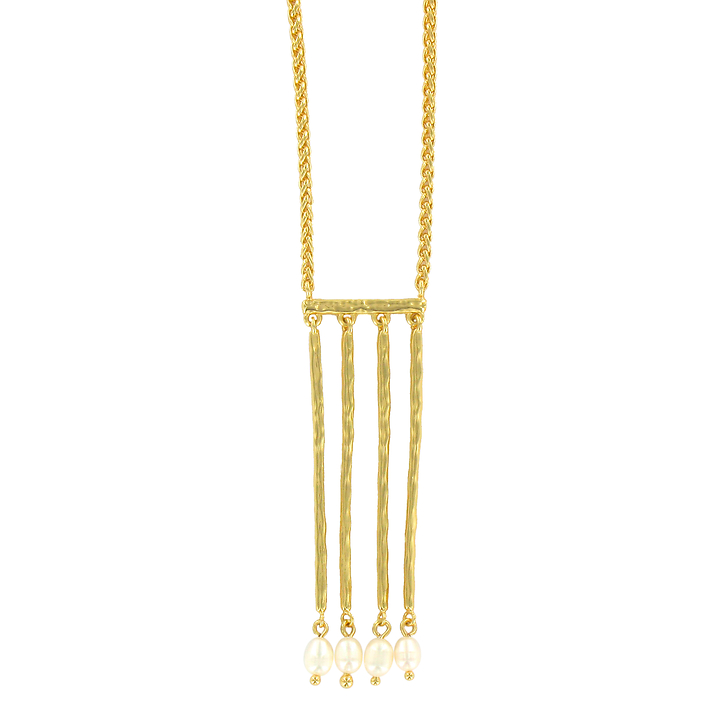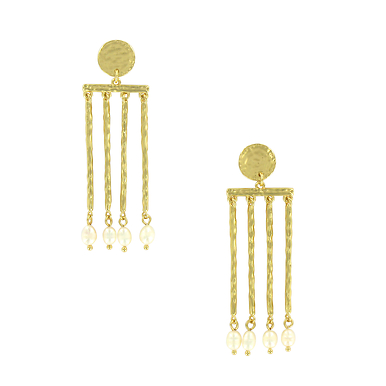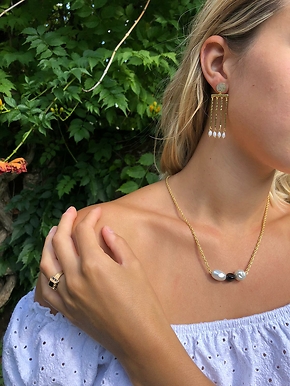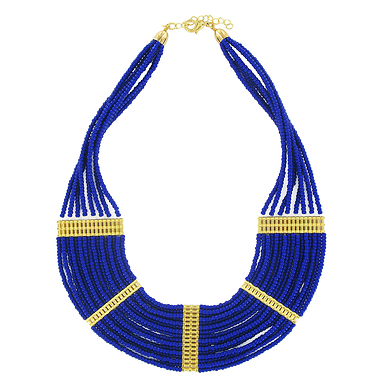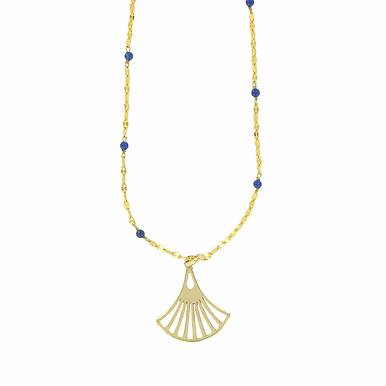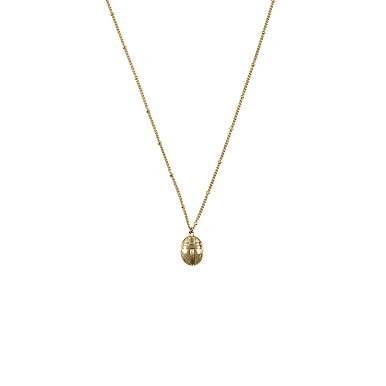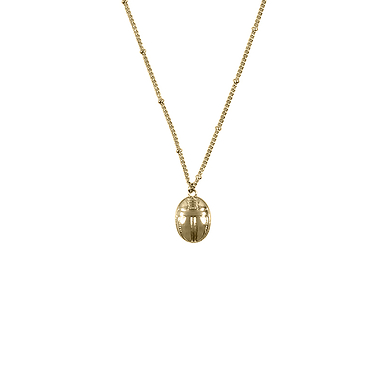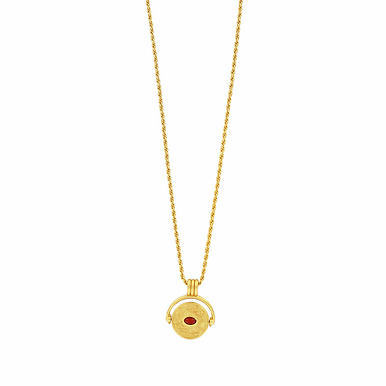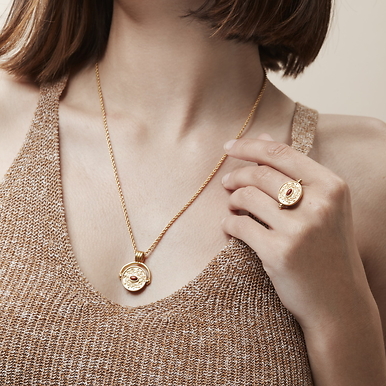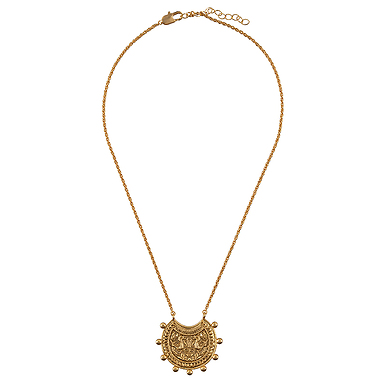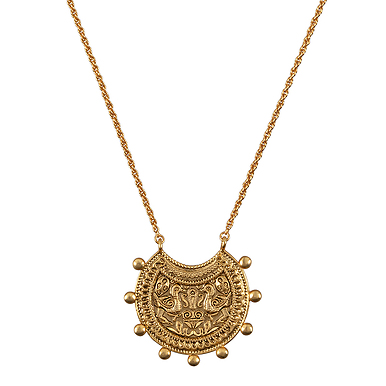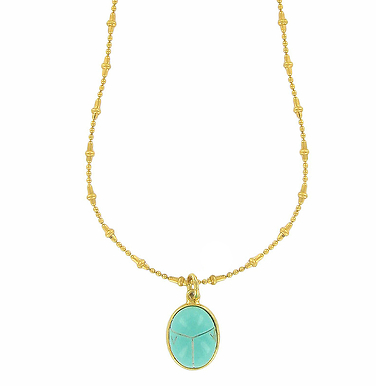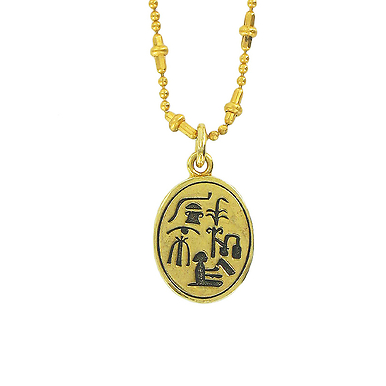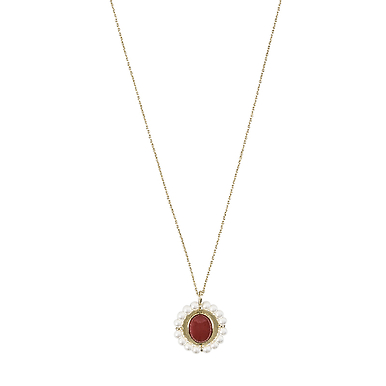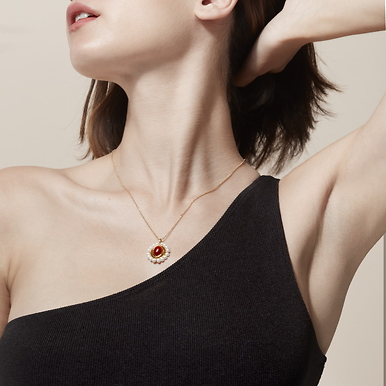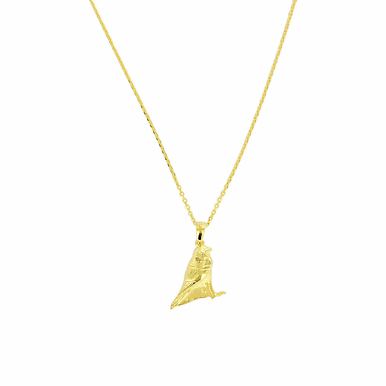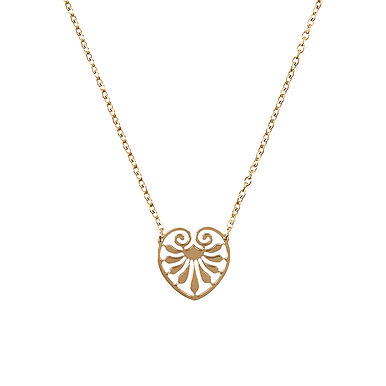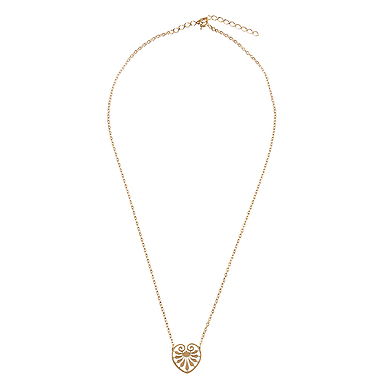Necklace Meret
BZ400172
Jewel inspired by a funerary mask from the Roman period. This type of earrings called "crotalia" (after a text by Pliny the Elder) were widespread throughout the Roman Empire.
The masks, like the painted portraits, were affixed to Roman mummies, especially in the necropolises of the most Hellenised...
Read more
Jewel inspired by a funerary mask from the Roman period. This type of earrings called "crotalia" (after a text by Pliny the Elder) were widespread throughout the Roman Empire.
The masks, like the painted portraits, were affixed to Roman mummies, especially in the necropolises of the most Hellenised cities such as Antinoe, the city founded by Hadrian in 132 AD after the death of his favourite Antinous. Over the course of time, the idealised Greek-style masks of the 1st century tended towards an individualisation of features. Ornaments, hairstyles and clothing are influenced by contemporary fashion, while being codified according to the sex and age of the deceased.
This mask depicts the deceased adorned with vertical beaded earrings, which were very common in the Roman Empire. Pliny the Elder mentions this type of earring in his monumental Natural History (c. 77 AD). C.) when he deals with the different kinds of pearls: "Women take pride in hanging them from their fingers, as well as two or three from each ear, and for this luxury object foreign names are introduced, refinements of a depraved prodigality, since, after inventing these earrings, these jewels are given the name of "crotalia", or castagnette pendants, as if one also liked to hear the very sound of the pearls clashing".
Material
Imitation pearls, Gold-plated brass
Keep the jewel away from dust and moisture.
Avoid contact with perfume, chemicals and cosmetics; avoid getting the jewel wet.
Close
Sold by GrandPalaisRmn

